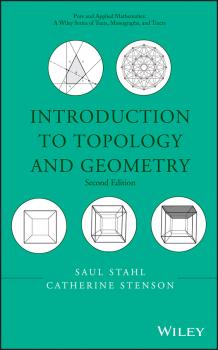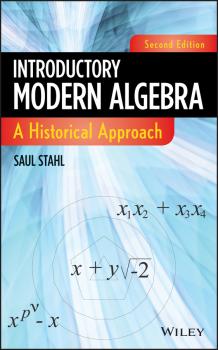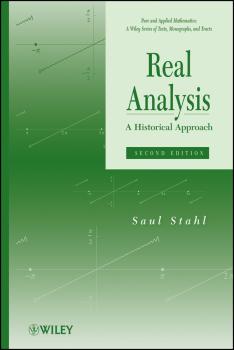ТОП просматриваемых книг сайта:
Saul Stahl
Список книг автора Saul StahlАннотация
An easily accessible introduction to over three centuries of innovations in geometry Praise for the First Edition “. . . a welcome alternative to compartmentalized treatments bound to the old thinking. This clearly written, well-illustrated book supplies sufficient background to be self-contained.” —CHOICE This fully revised new edition offers the most comprehensive coverage of modern geometry currently available at an introductory level. The book strikes a welcome balance between academic rigor and accessibility, providing a complete and cohesive picture of the science with an unparalleled range of topics. Illustrating modern mathematical topics, Introduction to Topology and Geometry, Second Edition discusses introductory topology, algebraic topology, knot theory, the geometry of surfaces, Riemann geometries, fundamental groups, and differential geometry, which opens the doors to a wealth of applications. With its logical, yet flexible, organization, the Second Edition: • Explores historical notes interspersed throughout the exposition to provide readers with a feel for how the mathematical disciplines and theorems came into being • Provides exercises ranging from routine to challenging, allowing readers at varying levels of study to master the concepts and methods • Bridges seemingly disparate topics by creating thoughtful and logical connections • Contains coverage on the elements of polytope theory, which acquaints readers with an exposition of modern theory Introduction to Topology and Geometry, Second Edition is an excellent introductory text for topology and geometry courses at the upper-undergraduate level. In addition, the book serves as an ideal reference for professionals interested in gaining a deeper understanding of the topic.
Аннотация
Praise for the First Edition «Stahl offers the solvability of equations from the historical point of view…one of the best books available to support a one-semester introduction to abstract algebra.» —CHOICE Introductory Modern Algebra: A Historical Approach, Second Edition presents the evolution of algebra and provides readers with the opportunity to view modern algebra as a consistent movement from concrete problems to abstract principles. With a few pertinent excerpts from the writings of some of the greatest mathematicians, the Second Edition uniquely facilitates the understanding of pivotal algebraic ideas. The author provides a clear, precise, and accessible introduction to modern algebra and also helps to develop a more immediate and well-grounded understanding of how equations lead to permutation groups and what those groups can inform us about such diverse items as multivariate functions and the 15-puzzle. Featuring new sections on topics such as group homomorphisms, the RSA algorithm, complex conjugation, the factorization of real polynomials, and the fundamental theorem of algebra, the Second Edition also includes: An in-depth explanation of the principles and practices of modern algebra in terms of the historical development from the Renaissance solution of the cubic equation to Dedekind's ideals Historical discussions integrated with the development of modern and abstract algebra in addition to many new explicit statements of theorems, definitions, and terminology A new appendix on logic and proofs, sets, functions, and equivalence relations Over 1,000 new examples and multi-level exercises at the end of each section and chapter as well as updated chapter summaries Introductory Modern Algebra: A Historical Approach, Second Edition is an excellent textbook for upper-undergraduate courses in modern and abstract algebra.
Аннотация
A provocative look at the tools and history of real analysis This new edition of Real Analysis: A Historical Approach continues to serve as an interesting read for students of analysis. Combining historical coverage with a superb introductory treatment, this book helps readers easily make the transition from concrete to abstract ideas. The book begins with an exciting sampling of classic and famous problems first posed by some of the greatest mathematicians of all time. Archimedes, Fermat, Newton, and Euler are each summoned in turn, illuminating the utility of infinite, power, and trigonometric series in both pure and applied mathematics. Next, Dr. Stahl develops the basic tools of advanced calculus, which introduce the various aspects of the completeness of the real number system as well as sequential continuity and differentiability and lead to the Intermediate and Mean Value Theorems. The Second Edition features: A chapter on the Riemann integral, including the subject of uniform continuity Explicit coverage of the epsilon-delta convergence A discussion of the modern preference for the viewpoint of sequences over that of series Throughout the book, numerous applications and examples reinforce concepts and demonstrate the validity of historical methods and results, while appended excerpts from original historical works shed light on the concerns of influential mathematicians in addition to the difficulties encountered in their work. Each chapter concludes with exercises ranging in level of complexity, and partial solutions are provided at the end of the book. Real Analysis: A Historical Approach, Second Edition is an ideal book for courses on real analysis and mathematical analysis at the undergraduate level. The book is also a valuable resource for secondary mathematics teachers and mathematicians.



